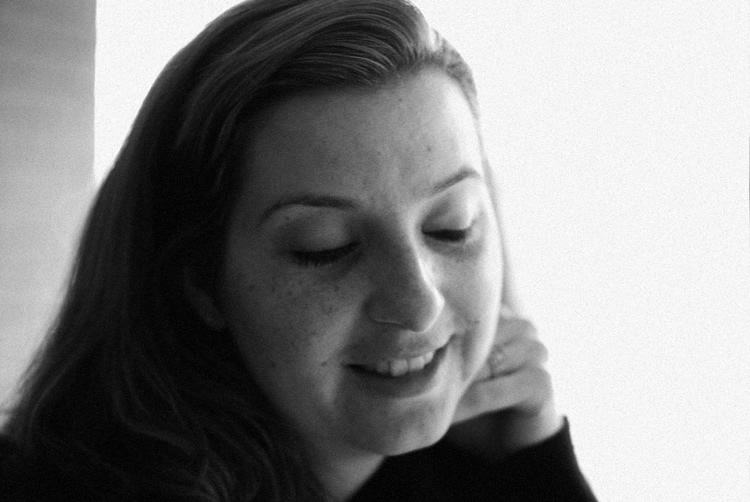When was the last time you felt triggered by someone you love? What about the last time you treated someone in a way you now regret?
What did it feel like in your body? What was going through your mind? Can you remember?
Maybe your shoulders pulled up. Maybe the muscles around your eyes scrunched. Maybe your stomach balled up in a knot.
Maybe you can’t remember your body because you were so lost in thought.
What you were experiencing was a deep-rooted pattern that started when you were little. And you’re not crazy or weird or bad for experiencing it.
“It’s an everyday experience,” writes the Buddhist nun Pema Chödrön. “At the subtlest level, we feel a tightening, a tensing, a sense of closing down. Then we feel a sense of withdrawing, not wanting to be where we are.”
The tragic irony is that we tense up and withdraw when what we’re really after is connection.
This tension only adds to the disconnection. It cuts us off from what’s actually happening in the present moment. What’s happening in our body. What we’re truly feeling emotionally.
As the disconnection builds, we try to get connection back in the ways we know so well. Ways that seemed to work when we were young.
We people-please, get quiet, boast about ourselves, you name it. We try all kinds of ways to get someone else to make us feel good and loved and attended to. To make us feel connected.
When the connection won’t come, we turn to drastic measures. Some of us get passive aggressive. Others straight up pick a fight. Some of us numb out with things like drinking and overeating. Others just give up and walk away.
Again, there’s nothing to be ashamed of. Your emotional patterns are built into your nervous system. You can’t help it.
As a kid, there were moments you lost connection with your parents and other caregivers. These moments were pivotal to the development of your young brain.
Because you were little, you were afraid you might lose the connection forever. You tried all kinds of ways to get attention. You watched how adults reacted to you. You learned over time what worked and what didn’t.
The problem is our emotional patterns are kid patterns. The stories that fuel them are extreme and rigid. “They better give me attention right now or I’ll be alone forever.” “If she isn’t happy then I’m not happy.” “If I don’t have a drink, I’m going to explode.”
Life isn’t really like that. It’s fluid and changing. There are ups and downs, moments of connection and disconnection. It can’t be controlled. Other people can’t be controlled.
But as a kid, you lost trust in life’s ebbs and flows. You forgot that connection would eventually come back. That connection — love — is right here, right now in the present moment. Every present moment.
As Björk sings in “All is Full of Love”:
You’ll be given love
You have to trust it
Maybe not from the sources
You have poured yours
Twist your head around
It’s all around you
All is full of love
All around you
You just ain’t receiving
Your phone is off the hook
But as a kid you developed ways of trying to manipulate life to give you that connected feeling. And that’s what hurts. All your trying to reestablish connection just causes more disconnection.
Here’s the good news. Even just one second of mindfulness presses pause on the kid stories. One second of noticing what’s actually happening in the present moment shines a light on the love.
Take a second right now. Feel your feet on the floor. Notice your breath coming in and out. Listen for the furthest sound. See if you can sense your gratitude for the fact that life just happens, regardless of whether you feel connected or not.
That’s why meditation can be so powerful. It retrains our nervous system — our mind and body connection. Every time we let go of thinking and come back to the breath or our feet on the floor or sound, we’re strengthening a muscle that keeps us more present.
We’re learning to trust that we can feel connected in any moment, regardless of what’s happening. Regardless of whether we’re getting what we want. Regardless of whether someone treats us a certain way or not.
As Chödrön writes:
Sitting practice teaches us how to open and relax to whatever arises, without picking and choosing. It teaches us to experience the uneasiness and the urge fully, and to interrupt the momentum that usually follows. We do this by not following after the thoughts and learning to come back to the present moment. We learn to stay with the uneasiness, the tightening … We train in sitting still with our desire to scratch. This is how we learn to stop the chain reaction of habitual patterns that otherwise will rule our lives. This is how we weaken the patterns that keep us hooked into discomfort that we mistake as comfort.
Hi, I’m Jeremy, a writer, meditation teacher, and host of the Meditation for the 99% podcast. I’m here to help you be more mindful about work, relationships, and politics. Subscribe to my weekly email here.
Download my free ebook on how meditation can transform your life.
Photo by Russ Morris.
